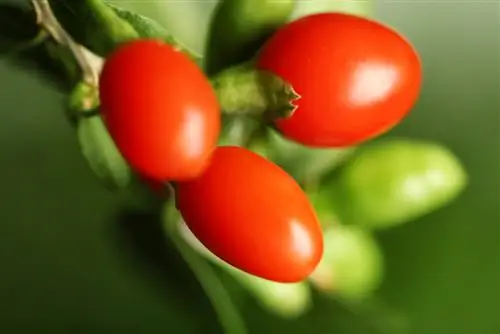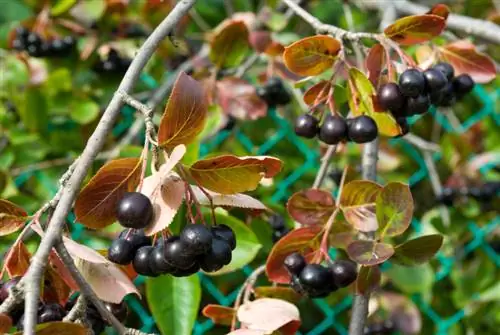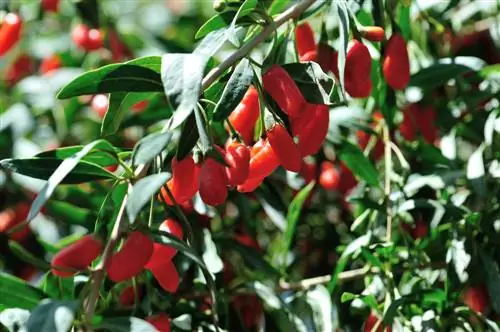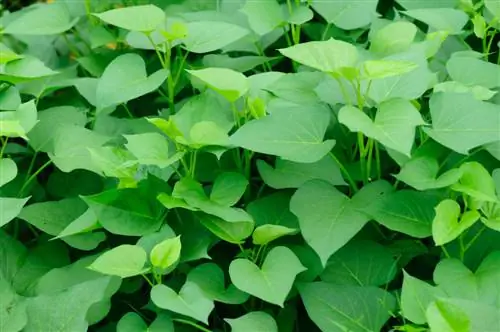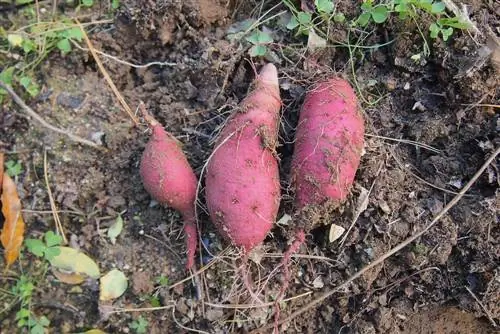- Author admin [email protected].
- Public 2023-12-16 16:46.
- Last modified 2025-01-23 11:21.
The wild forms of the goji berry, also known as common buckthorn or devil's twine, are also found in some regions of Germany. However, the hope of a satisfactory harvest is more likely to be fulfilled if you only plant appropriately selected cultivars in your garden.
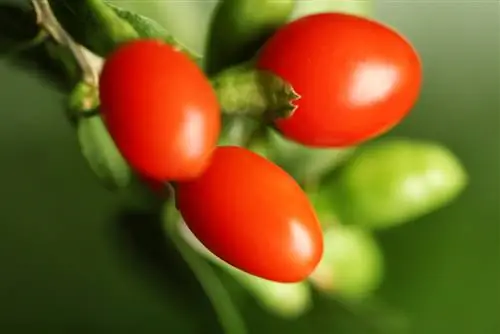
What types of goji berries are there?
Popular goji berry varieties are “Big & Sweet”, “Korean Big”, “Big Lifeberry”, “Sweet Lifeberry” and “Instant Success” from Asia, as well as “Turgidus”, “L22” and “NQ1” for commercial cultivation. They differ in fruit size, sweetness and growth characteristics.
Differences and similarities between wild forms and productive varieties
Since the targeted cultivation of goji berries has been practiced in Asia for centuries, many widespread cultivars come from China and Mongolia. There are now also selections from other regions of the world, some of which are even used for commercial cultivation on cultivated areas in Germany. Wild forms of the buckthorn grow just as strongly and quickly as cultivated varieties, but they often have significantly smaller fruits that can be harvested in fewer quantities. In principle, all fruits of the different varieties of fenugreek can be eaten both fresh and dried. However, varieties with smaller and rounder fruits are generally better suited for drying than particularly large-fruited varieties.
Particularly sweet varieties from Asia
The following cultivars of buckthorn (Lycium barbarum) have now become very well known among fans of vitamin-rich goji berries:
- Big & Sweet
- Korean Big
- Big Lifeberry
- Sweet Lifeberry
- Instant Success
The well-sounding names indicate that these cultivars were designed to produce the highest possible yield of the largest and sweetest fruits possible. Last but not least, an attempt was made to reduce the aftertaste of goji berries, which many people perceive as bitter and tart. The shape of the fruits in different varieties can either tend to be more spherical or elongated club-shaped; the color spectrum ranges from bright red berries to a bright mixed tone of red and orange.
Internationally recognized cultivars for commercial cultivation
Meanwhile, well-known botanists have bred varieties that naturally have very robust plant he alth and are therefore less susceptible to diseases. For example, powdery mildew occurs less frequently and no pesticides are required for cultivation. The following varieties have less flowery names than their Asian competitors, but also provide high yields and quickly flowering crops:
- Turgidus
- L22
- NQ1
Tip
A pleasant side effect of some cultivars of the Goji berry is a lower tendency to form underground runners. This means that even without a rhizome barrier built into the ground, the entire garden will not be taken over by the strong-growing berry bushes.

